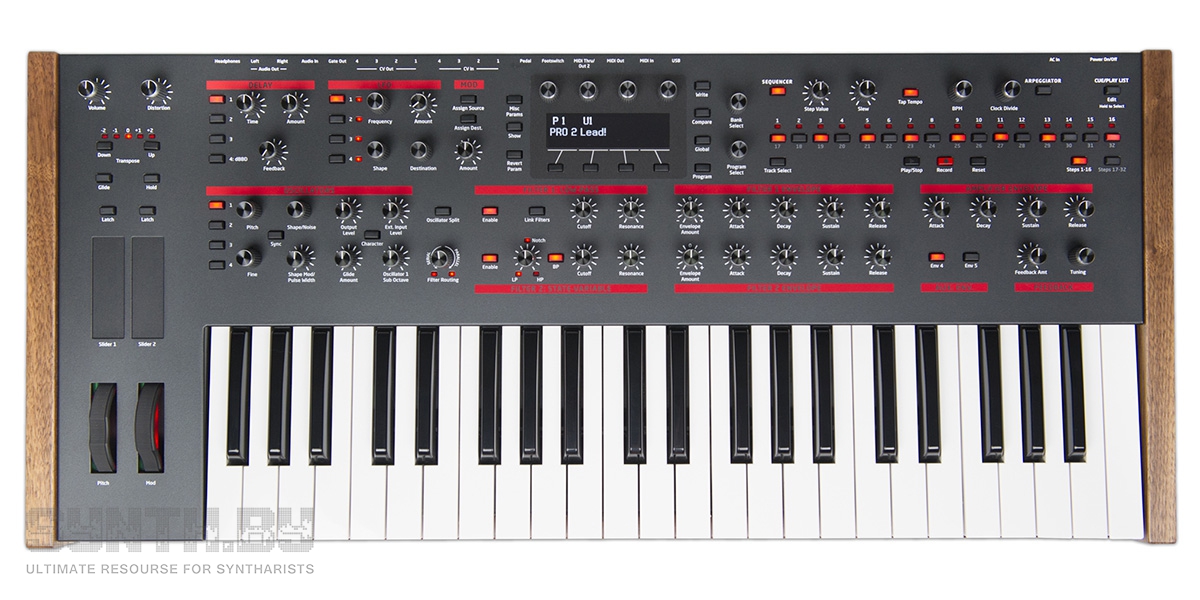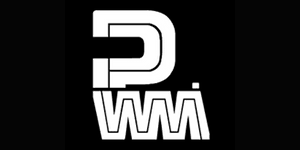Dave Smith Instruments Pro 2 из ряда тех произведений, которые избранным авторам позволено создавать в свое удовольствие. Тем, кто не покладая рук переживал сумасшедшие этапы требовательных и жестких рыночных условий, можно расслабиться – прагматикой уже не удивишь, музыканты давно обзавелись любимым рабочим инструментом и хотят романтики. Дейв Смит заслужил право определять «романтику» на свое усмотрение и придумал монофонический синтезатор с аналоговыми фильтрами и усилителями, а также мощным секвенсером.
Как и Prophet 12, Pro 2 работает на 4 цифровых осцилляторах, да и в целом, построен на элементной базе ведущего синтезатора DSI, хотя и не является только лишь "выделенным" голосом Prophet 12. Помимо стандартных волн имеет 12 цифровых (изменяющих параметры формы в стиле таблично-волнового синтеза), 3 типа шума и возможность формирования суперволн, обрабатывающих звук эффектом расстраивания.
Pro 2 обогащает свою монотембральность не самыми типичными трюками: позволяет назначать октавы и волноформы на каждый из 4 осцилляторов, тем самым затрагивая разные каждой нотой в проигрыше. Впечатление усиливают индивидуальные огибающие на каждый осциллятор в парафоническом режиме. Все это разрешает Pro 2 куда более убедительно притворяться полифоническим синтезатором, по сравнению с другими аналогичными инструментами. Перед фильтрами сигнал проходит через секцию «Сharacter», включающую обработку алгоритмическими модулями Bit-crushing, Drive, Girth и Air. И даже здесь мы отмечаем желание создателей Pro 2 уйти от классической схемы звукового тракта, когда после генераторов сигнал сразу идёт на фильтры и их огибающие, а затем на усилители. К слову говоря, эти алгоритмы обработки настолько интересно трансформируют звук, что Дэйв Смит решил выпускать их как отдельные модули для систем стандарта Еврорэк.
Маршрутизация аналоговых фильтров, из которых один - на основе низкочастотного из Prophet~6, а второй - с изменяемыми параметрами (SVF, State Variable Filter) наподобие фильтра из SEM Оберхайма; он же, между прочим, пошёл и в OB-6), вероятно, покажется одной из самых сложных, гибких и вариативных среди синтезаторов подобного уровня. Модуляция открывает широчайший спектр: четыре LFO, две дополнительные огибающие с задержкой (D-ADSR) для усилителя и фильтров, четыре входа CV, направлящих в матрицу любой источник модуляции и тем самым масштабно расширяющие возможности как самого синтезатора, так и группы инструментов, с которыми он связан через управляющие сигналы. Среди эффектов следует отметить аналоговый дисторшн, 3 цифровых дилея + 1 эмуляция олдскульного аналогового, а также tuned feedback-эффект, пропускающий поток из усилителя через короткую задержку и отсылающий обратно к осцилляторам на порог секции «Сharacter».
Метки: гибридный синтезатор
















